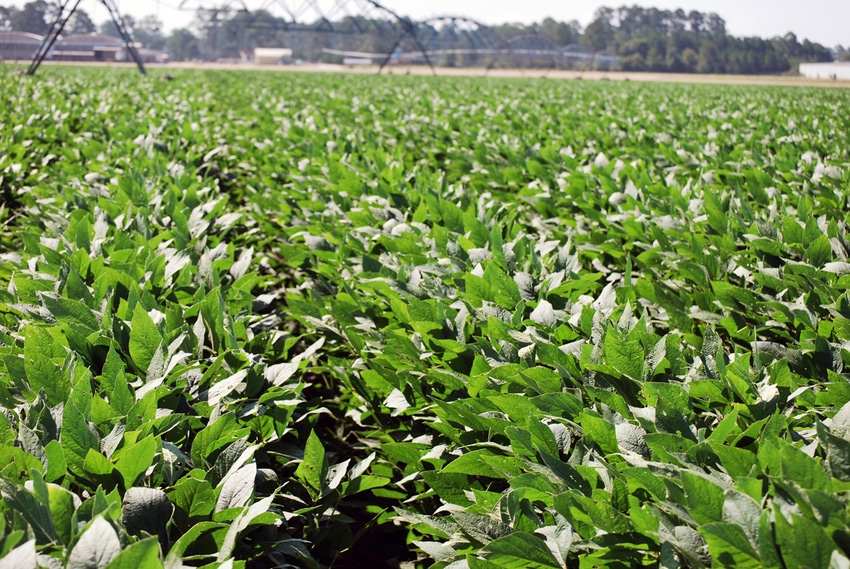
For the past few years, David Hardy, who runs the soil testing laboratory at the North Carolina Department of Agriculture and Consumer Services, has received a common question from farmers across the state: “Are the department’s potash fertility soybean recommendations adequate?”
For the most part, Hardy believes the recommendations are adequate, but he acknowledges that production practices have certainly changed in the Tar Heel State since the recommendations were made more than 30 years ago.
“We’ve seen a lot of varietal and tillage changes over the past 30 years. No-till was still in its infancy back in the early 1980s. Today, we have better insect and weed control and higher plant populations and more irrigation. A lot of production practices have changed,” Hardy said at the annual convention of the North Carolina Agricultural Consultants Association Dec. 3 in Raleigh.
“We think that higher yields demand more nutrients. It’s logical to think that. Fertility is more on the radar in the past five to six years. I have been asked how low can I go with P (phosphorus) and K (potash) and still get by because P and K were so highly priced,” Hardy said.
Hardy explains that there is very little data to support the department’s soybean recommendations. “Our lab currently uses the Mehlich 3 soil test extractant with the switch from Mehlich 1 occurring in the early 1980s,” Hardy explained.
As a whole, Hardy believes the recommendations have worked well.
Hardy notes that here have only been a handful of studies on potassium and potash recommendations for soybeans in North Carolina since the mid-1980s. At that time, soybeans yields were increasing in North Carolina due the adoption of narrow row planting. The question arose if the recommendations were adequate, especially for sandier soil types that might not be able to apply potassium to the plant due to low buffer capacity.
“When we talk about buffer capacity, we think about the exchangeable potassium in the soil or our K index reported. The exchangeable K supplies the potassium in the soil solution that the plants take from the soil for that crop to grow. Sandy soils with low K levels have low buffer capacity and limited ability to keep a supply of K available for plant growth,” Hardy explained.
Hardy presented data from North Carolina studies as well as more recent data from a couple of other southeastern states. One North Carolina study looked at potash placement, banding versus broadcast applications.
Broadcast K was actually better than banding K. “For K, we think that significant K can be acquired from lower depths, the subsoil, especially for tap-rooted crops like soybeans,” Hardy pointed out.

David Hardy, who runs the soil testing laboratory for the North Carolina Department of Agriculture and Consumer Services, believes the department’s potash fertility recommendations are adequate, even though production practices have changed since the recommendations were made more than 30 years ago.
Most growers and consultants do not sample the subsoil but occasionally looking at K in lower soil depths could be advantageous at times. Hardy also discussed sulfur in his presentation, noting, “Sulfur deficiency is not typically seen much in soybeans but is a concern in corn and small grains.”
“We know that sulfur is leachable, but we also know it can accumulate in the subsoil. I think we should have mor
e concerns with shallow rooted crops like corn and small grains than soybeans,” Hardy said.
“In our sulfur tests, conducted a few years ago, we saw more response with corn than wheat. Soybeans were n
ot studied. We believe that corn may be more shallow-rooted than wheat and also uptake occurs over a very narrow time-frame with corn as compared to wheat.”
Hardy believes the plant uptake demand due to the shorter growing season with corn is a possible reason for a greater r
esponse with corn. He encourages corn and wheat farmers to utilize tissue testing to pinpoint if there is a sulfur deficiency in their corn
or wheat, since nitrogen and sulfur deficiency can look very similar.
He also urged farmers to pay close attention to the nitrogen to sulfur ratio.
“The nitrogen to sulfur ratio is sometimes overlooked,” he pointed out. “When sulfur is inadequate in the plant, you see nitrogen accumulating in the plant that’s not utilized. As a result, the N-S ratio is skewed. This may indicate sulfur deficiency.”
About the Author(s)
You May Also Like






